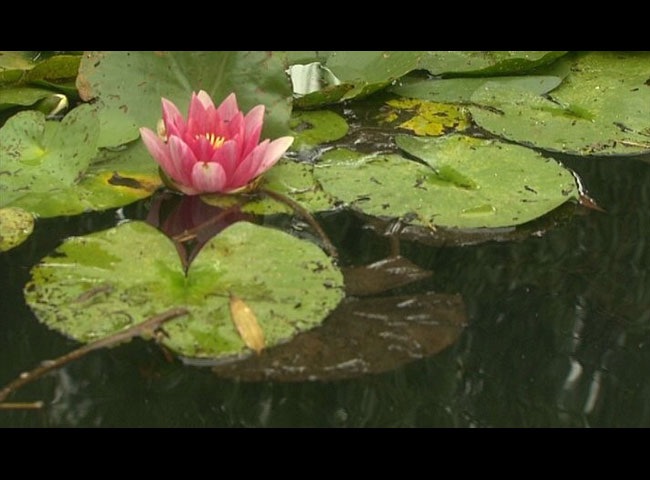Les Nympheas - The Water Lilies : Monet's Greatest Dream
-
Réalisé par Jean-Paul Fargier • Écrit par Pierre Georgel, Jean-Paul Fargier
-
France • 2006 • 52 minutes • Vidéo HD • Couleur
- Réalisation :
Jean-Paul Fargier - Écriture :
Pierre Georgel, Jean-Paul Fargier
- Production (structure) :
Les Films d'Ici - Participation :
Musée de l'Orangerie - Ayant droit :
Les Films d'Ici
- N° ISAN :
ISAN 0000-0001-9EF3-0000-Q-0000-0000-X
Résumé
À 74 ans, Claude Monet, le patriarche de l’impressionnisme, se jette à corps perdu dans un rêve fou.
Il le couve depuis près de vingt ans. Et soudain, en 1914, au moment même où va éclater la Grande Guerre, il se lance dans sa bataille, la bataille des Nymphéas.
Ce film retrace cette aventure.
Comment Monet la vit dans l’isolement, avec une formidable persévérance, à travers la guerre, le deuil, les misères physiques du grand âge, l’insatisfaction qui le tenaille en permanence devant l’objectif démesuré qu’il s’est fixé.
Et comment, après qu'il ait fait don de ce grand oeuvre à la France, par l'intermédiaire de Clemenceau, il lui donne corps dans le vaste ensemble mural du musée de l’Orangerie. Veillant avec minutie sur le dispositif architectural afin que ses Nymphéas, poème lyrique de la nature, soient un havre d’harmonie dans le chaos de la ville.
At the age of 74, Claude Monet, the patriarch of the Impressionist Movement, decided to devote himself entirely to an implausible dream. A dream which had been on his mind for over twenty years. Finally, in 1914, as World War I was about to erupt, he chose to launch his own battle, that of the Water Lilies project.
Our film recounts this adventure.
This is how Monet lived it; isolated, with amazing perseverance, through a war, the loss of loved ones, the physical hardships of old age, and the dissatisfaction he constantly felt before the daunting task he had chosen as his final goal.
And how, after having bestowed this great work to France with the help of his friend, President Georges Clémenceau, he brought it to life as a vast mural collection at the Orangerie Museum in the Tuileries.
He painstakingly supervised the architectural proceedings at the Orangerie, so that the lyrical ode to nature that is the Water Lilies collection might become a harbor of harmony within the chaos of the city.



